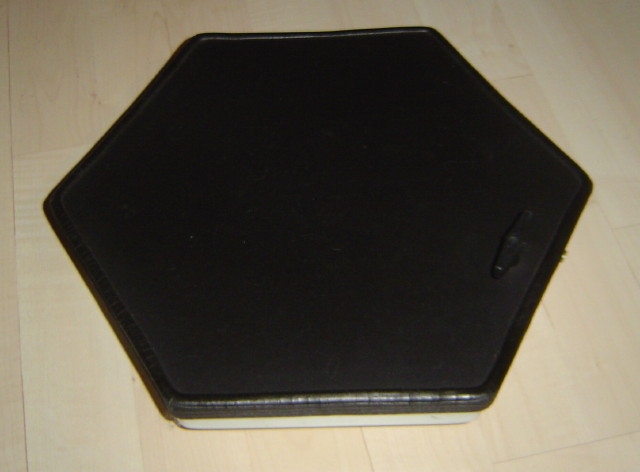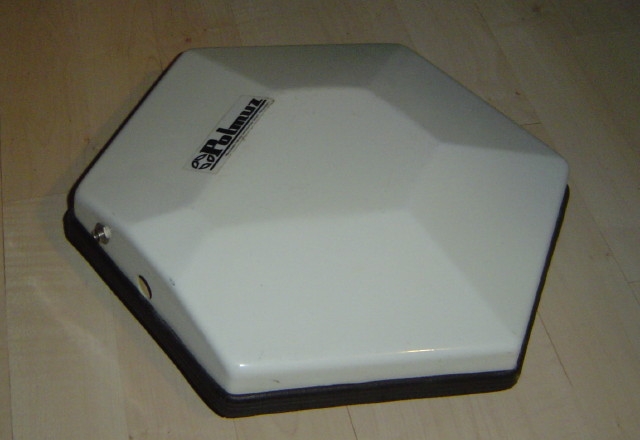I recently won an auction where 2 vintage hexagonal shaped pads had been offered. Although the description did not say anything about “Simmons”, the picture really made me believe that they were. Finally I got these two pads for a reasonable price of 1 Euro. Yes, a bargain. But when they finally arrived, I was very astonished what I had actually bought: Two pads manufactured by a polish company named “Polmuz” (“POLish MUZak”):


I was not disappointed at all knowing that I probably got something that might have been even rarer than any other Simmons pad I already owned. An almost 1:1 copy of the SDS7’s MKIII pads. Today I could hardly resist when I saw another two pads of a U.S.S.R. manufacturer named “LELL”. Just the same as my Polmuz: hexagonal shaped pads, made in 1984, obviously Simmons copies. While Simmons hardly clamped down on plagarism, the eastern bloc manufacturers had always been protected by the iron fence.
In western countries, the hexagonal shape associated with electronic drums was registered as a trade mark. That’s why Simmons could tackle against competitors like Pearl who initially delivered there DRX-1 console with hexagonal shaped drum pads as well. But Pearl was forced to change the shape into something between octagonal and round as you probably remember. Some manufacturers tried pentagonal pads like Dynacord or Maxim, some produced octagonal pads like Weinberg or Cheetah. But there was no company that did not copy anything from Simmons at all: either the design or the sound generation.
If you are generally interested in what the Russians produced during the cold war, I recommend the Museum Of Russian Synths